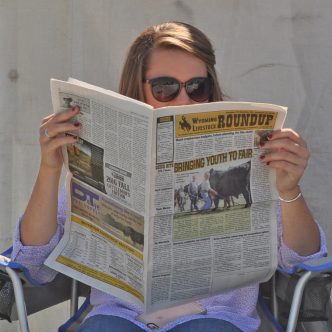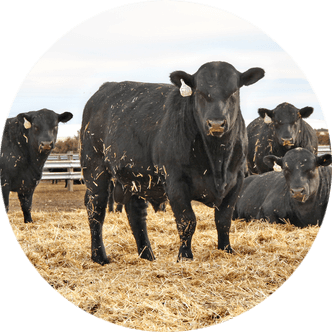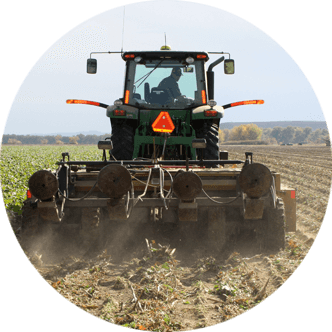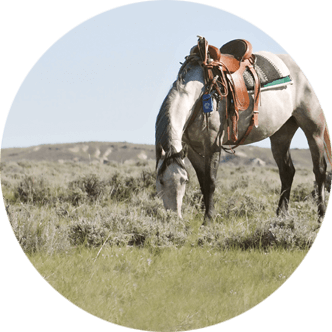Stretching Feed Resources in Wyoming: Practical Alternatives for Cow/Calf Producers
Unpredictable hay supplies and high feed costs are a reality for Wyoming cow/calf producers. Long winters and dry summers only add pressure to feeding programs.
This brief outlines proven strategies and locally-adapted feed alternatives to maintain cow performance, support calf growth and manage costs during tight forage years.
Begin with a strategy
A sound feeding program begins with clear goals, including keeping cows on track for rebreeding and calving on schedule, maintaining calf weight per cow and minimizing feed cost per pound of calf sold.
To meet these goals, producers should consider the following Wyoming-adapted feeding principles.
1. Use what you’ve got: Maximize the use of local feeds like grass hay, millet, corn stalks, straw or whatever’s affordable and available.
2. Test and balance: Test all feed for nutrient quality and build rations to meet the cow’s nutritional needs – not more, not less.
3. Supplement wisely: Low-quality roughages like wheat straw or late-cut hay can work if paired with the right protein and energy sources.
4. Feed smart: High-need animals like lactating cows or growing heifers should get the highest-quality feeds. Save lower-quality roughage for cows in mid-gestation.
Make the most of
hay and grain
Grain can be a valuable tool when hay is expensive or limited. Since most grass hay contains only 50 to 65 percent of the energy of grain, it can be partially replaced when carefully managed.
A good rule of thumb is one pound of grain can replace about 1.2 to 1.5 pounds of alfalfa or 1.5 to two pounds of grass hay.
While grain isn’t always easy to feed on pasture or rangeland, Wyoming producers have found creative solutions using barrels, split pipe, old bunks and even feeders mounted on trailers.
Moving cows to a drylot during winter or drought can also simplify feeding and allow limit feeding of high-energy rations. These diets reduce forage demand and cut feed costs but require careful oversight.
Always provide at least one-half to one percent of body weight in roughage to support rumen health.
Transition cows slowly to high-grain diets over seven to 10 days.
Start with two to three pounds of grain per head and free-choice hay, then gradually increase grain and reduce hay.
Provide plenty of bunk space, feed twice a day if possible and monitor body condition closely.
Alternative feed options
A variety of byproducts and crop residues can supplement or replace traditional feeds, especially when availability or cost is a concern.
These include corn stalks, millet hay, wheat straw and sorghum-sudangrass, which are often cheaper, but require protein supplementation. Note, millet hay and sorghum-sudangrass may have nitrate issues under drought. Be sure to ask a local Extension office about testing.
Other options include distillers’ grains, which are 25 to 35 percent crude protein (CP) and high in energy; condensed solubles like distillers’ syrup, which is high in protein and energy; sugarbeet pulp, a highly-digestible energy source with variable protein; soybean hulls, which are 10 to 16 percent CP with good energy and can be fed with or without hay; wheat middlings, which are high in both protein at 18 percent and energy; corn gluten feed, which is high in protein at 25 percent and works well with forage and cottonseed hulls, which are low in protein and energy-dense.
Always provide a good mineral mix, especially calcium and phosphorus, and consider adding vitamin A during winter or when feeding low-quality roughages.
Keep in mind, byproduct feeds are not uniform like commercial feeds.
Energy and protein can vary widely between batches.
They may contain high levels of certain minerals like sulfur or phosphorus which can interfere with absorption of others or become toxic at high levels.
Sample and test each load of byproduct feed.
Work with Extension educators to determine proper inclusion rates and feeding practices.
Thinking outside the bale
During extreme years, producers have turned to unconventional feeds like brewer’s grains, beet pulp, distillers’ grains, cull potatoes and sweet potatoes.
One creative solution which has gained traction is “cow lasagna” – a layered, fermented feed made from low-cost hay and wet distillers’ grains (WDGs).
To make cow lasagna, unroll a bale of low-cost forage like hay, over-mature grass or poor-quality alfalfa and spread a layer of WDGs three to six inches thick over the hay.
Repeat the layering process – hay, then WDGs.
Pack the stack tightly using a tractor or loader to remove air pockets, then cover with heavy-duty plastic and weigh it down with tires, sandbags or dirt.
Allow to ferment for 30-plus days before feeding.
Nutritional benefits of cow lasagna include high protein and energy since WDGs typically contain 25 to 35 percent CP and 85 to 90 percent total digestible nutrients; a balanced ration, as combining with forage helps dilute excessive protein or sulfur; improved palatability, as fermentation enhances taste and digestibility and extended feed life, reducing spoilage of wet byproducts.
Some tips for success include testing WDGs for nutrient and sulfur content, using dry hay to absorb moisture and improve fermentation, keeping layers thin – less than six inches – sealing well and monitoring covers regularly and using within three to six months for best quality.
Final considerations
If feeding root crops like cull potatoes, always process them to reduce choking risk, especially in group feeding situations. Gradually introduce all new feeds and monitor cow condition closely during transitions.
Before committing to any alternatives, assess both nutritional and economic value. A helpful resource for this is the University of Wyoming (UW) Ranch Tools Feed Value Calculator, which can be found at uwyoextension.org/ranchtools/relative-feed-value.
Wyoming beef producers have weathered many tough feeding seasons. With creative strategies, local feed options and support from Extension, they can maintain cow productivity while managing feed costs, even when the hay pile is low.
Makayla Getz is the UW agriculture and natural resources Extension educator serving Park County and a member of the UW Beef Extension Team. Established in 2024, the Beef Extension Team is comprised of UW Extension educators and specialists focused on beef production and related topics in Wyoming. For more information, visit uwyo.edu/anisci/outreach/uw-beef-program/index.html.





